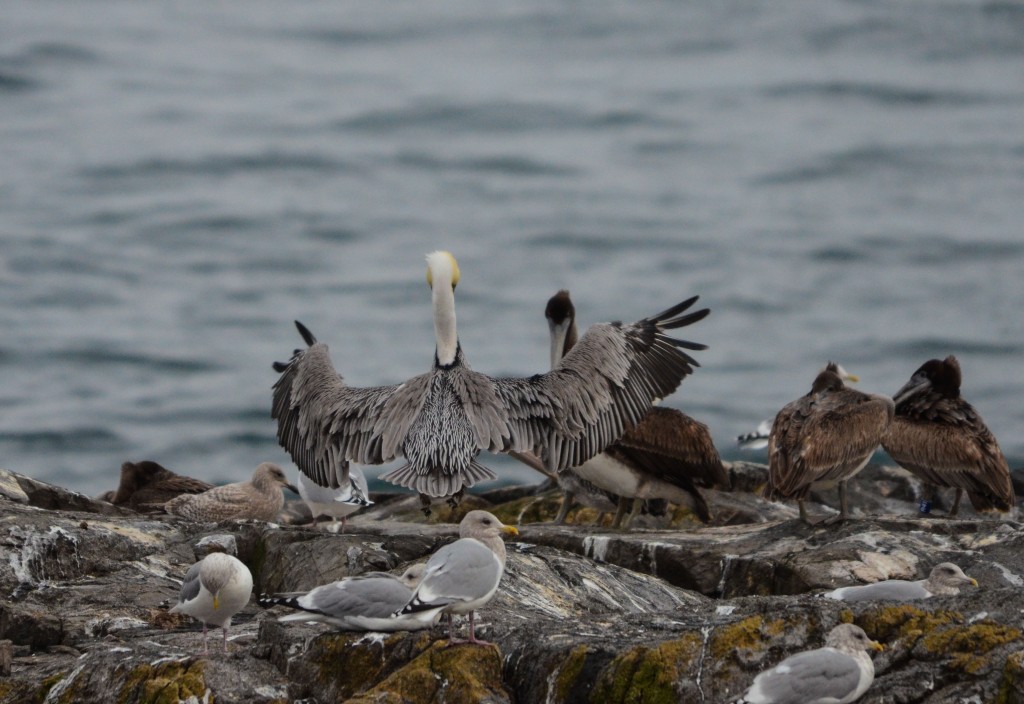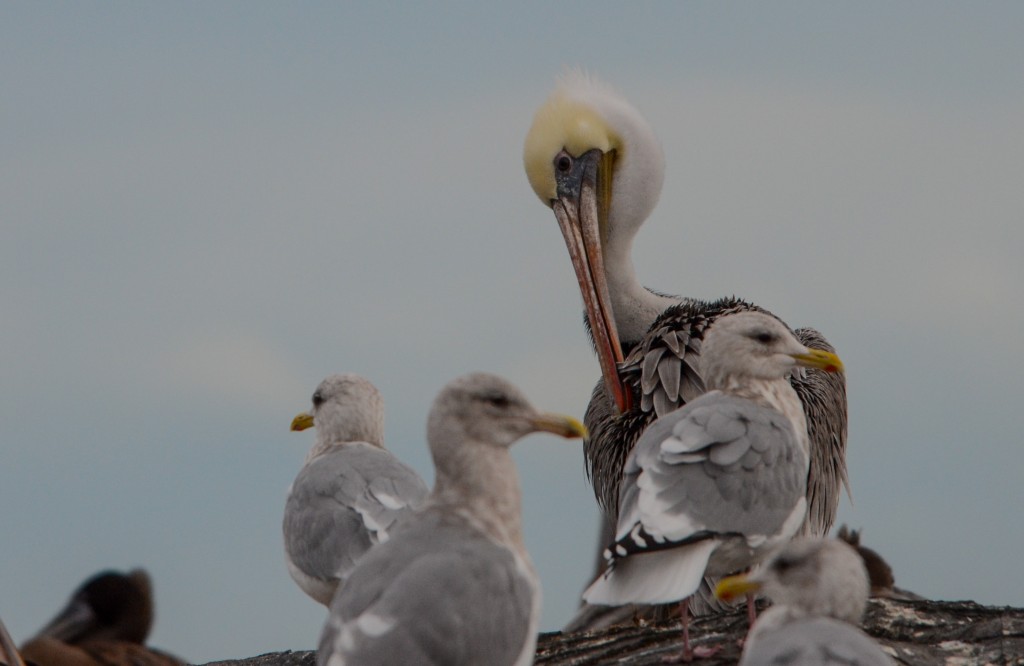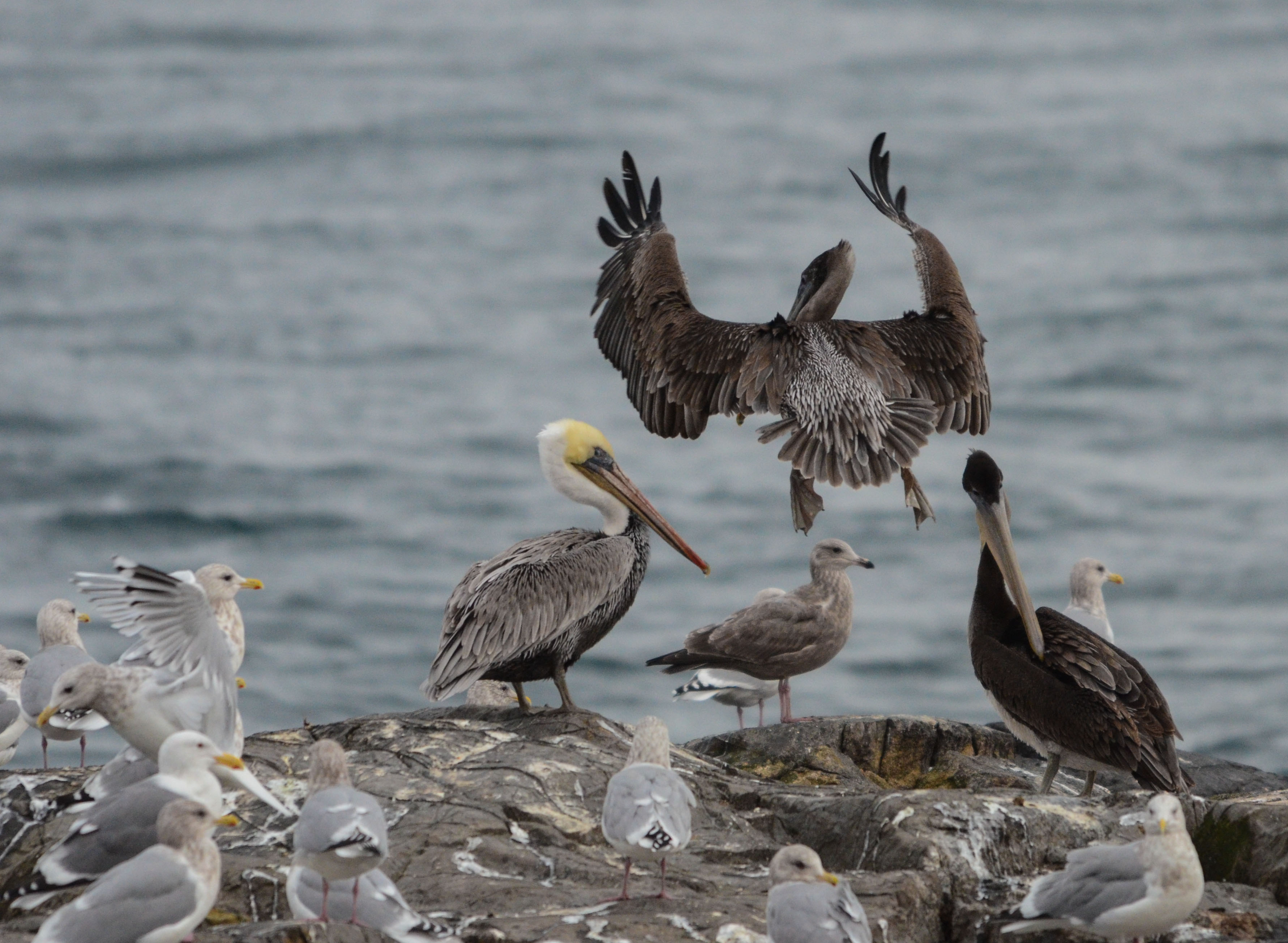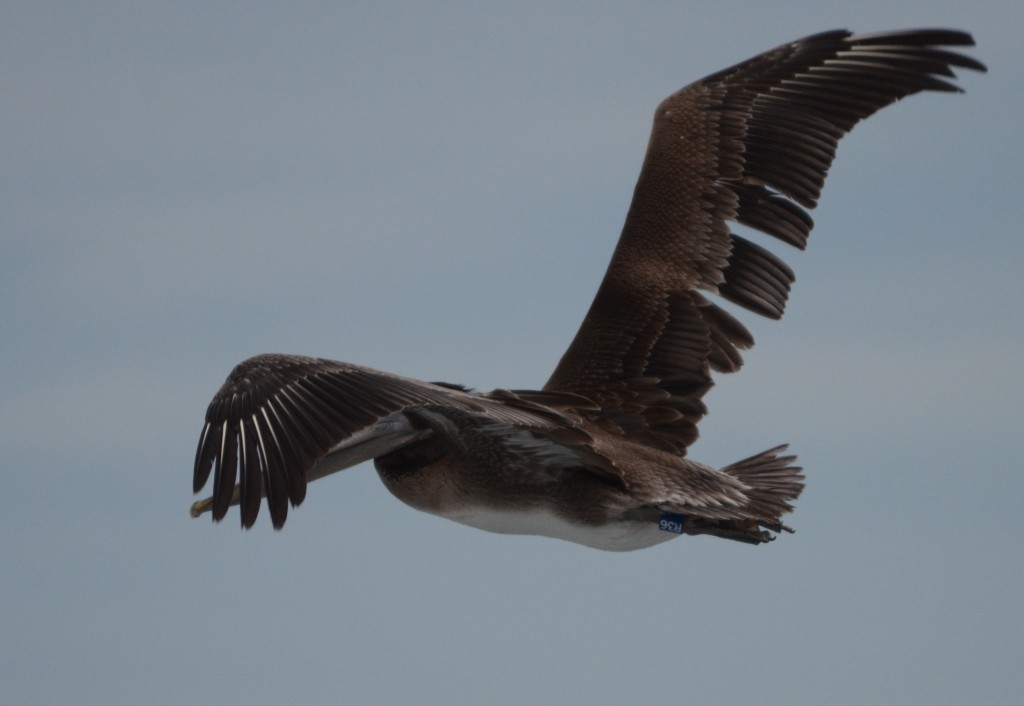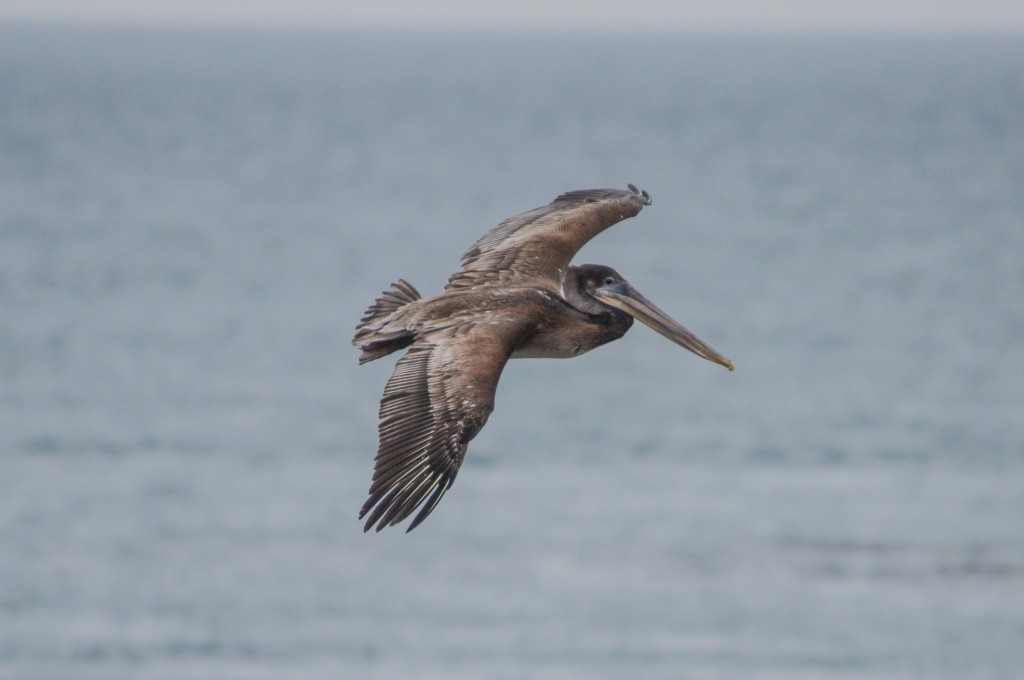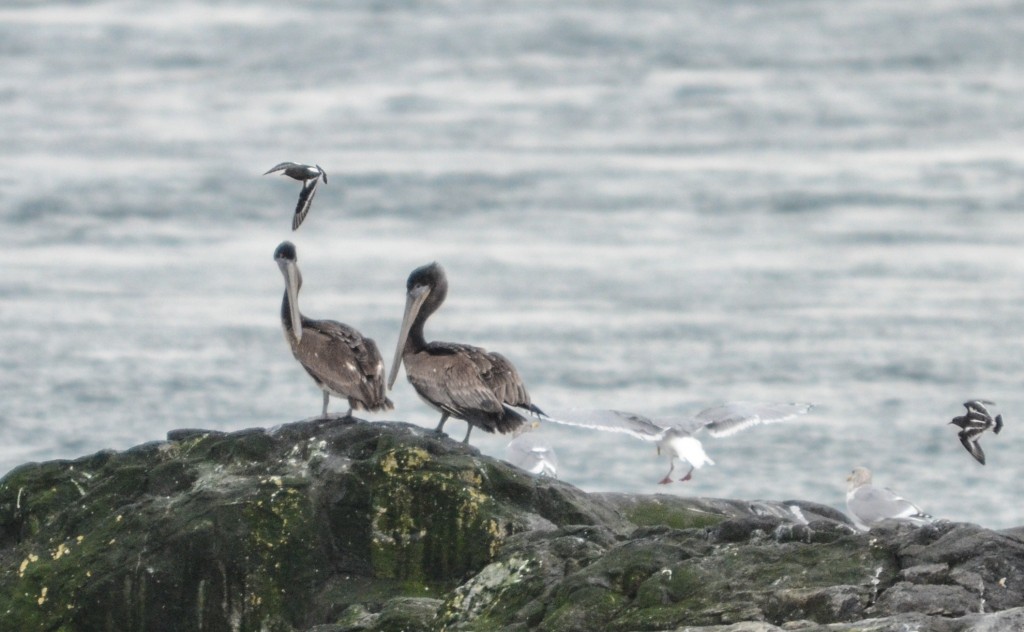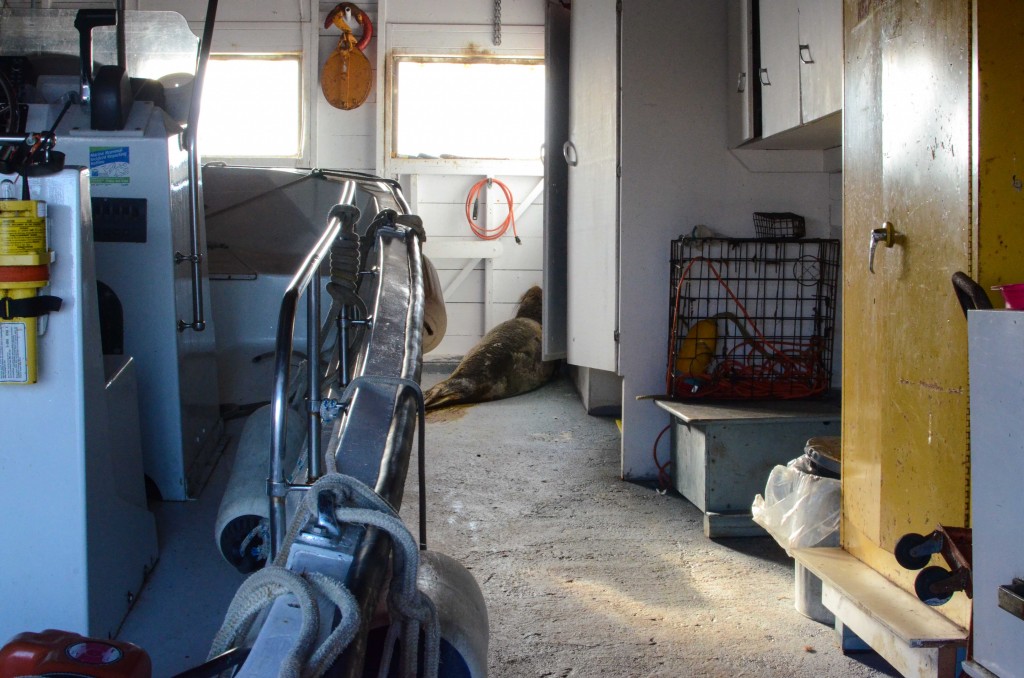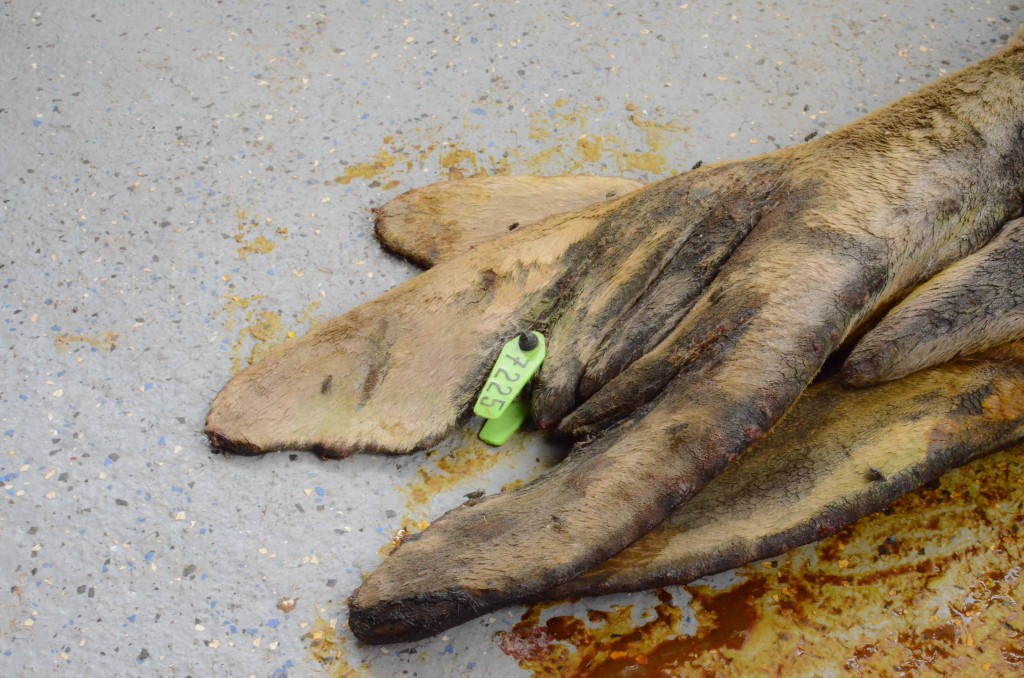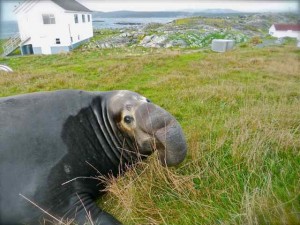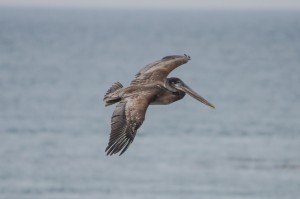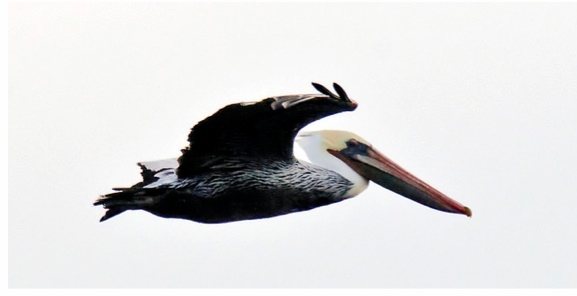 In late September to mid October of 1997, Brown Pelicans were sighted roosting on George Point, just North of the reserve on Bentinck Island, and at Race Rocks in the eastern entrance of the Strait of Juan de Fuca. This group was filmed one afternoon from the Pearson College dive boat. Note, they had a habit of stretching their necks up vertically. The group stayed in the Race Rocks area for several weeks that fall. This is a rare event to have these birds this far North but the records from the daily water samples taken at Race Rocks in October and November of 1997 indicate the highest water temperatures since records were first made in 1927 and the lowest salinities since the first records in 1936. Another pair of Pelicans was observed in early November of 2001 by the Race Rocks Guardians. Noting the Brown Pelican’s “graceful glide” and dextrous use of its bill – which functions both as a dip net and cooling mechanism, it has been described as one of the most interesting of the North American birds. In recent years,
In late September to mid October of 1997, Brown Pelicans were sighted roosting on George Point, just North of the reserve on Bentinck Island, and at Race Rocks in the eastern entrance of the Strait of Juan de Fuca. This group was filmed one afternoon from the Pearson College dive boat. Note, they had a habit of stretching their necks up vertically. The group stayed in the Race Rocks area for several weeks that fall. This is a rare event to have these birds this far North but the records from the daily water samples taken at Race Rocks in October and November of 1997 indicate the highest water temperatures since records were first made in 1927 and the lowest salinities since the first records in 1936. Another pair of Pelicans was observed in early November of 2001 by the Race Rocks Guardians. Noting the Brown Pelican’s “graceful glide” and dextrous use of its bill – which functions both as a dip net and cooling mechanism, it has been described as one of the most interesting of the North American birds. In recent years,
the pelican numbers have increased with sightings reported sporadically at Race Rocks. Its habitat is coastal islands on the Atlantic and Pacific Coasts of North, Central and South America.
This video was made from images taken by Pam Birley on remote camera 5 on Nov 10, 2006.. selected images are shown also below:
-
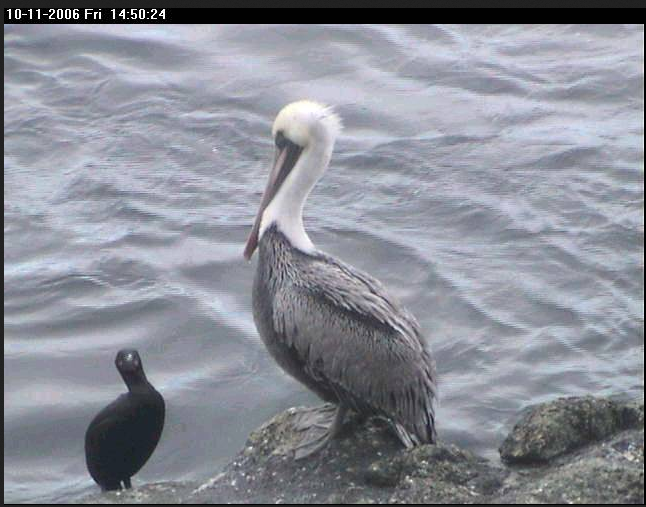
-
Note the white head, typical of a mature adult. You can see the relative size to the cormorant in the above photo.
-
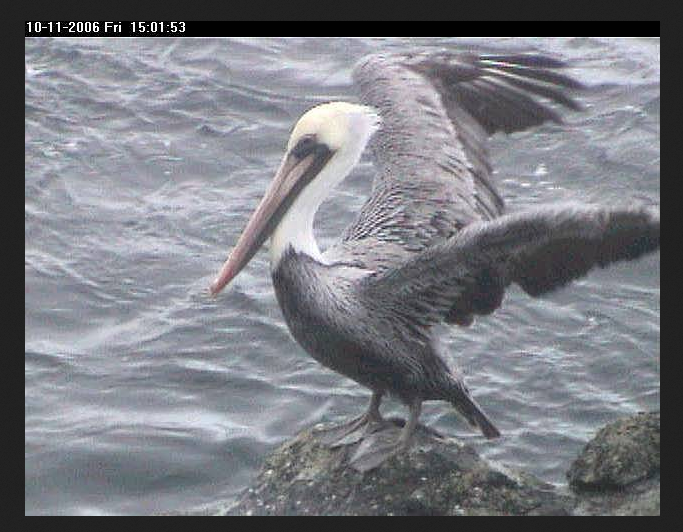
-
This sighting takes place one week after the first hard rain of the winter, with warm temperatures brought in from the Pacific by the “pineapple express”
-
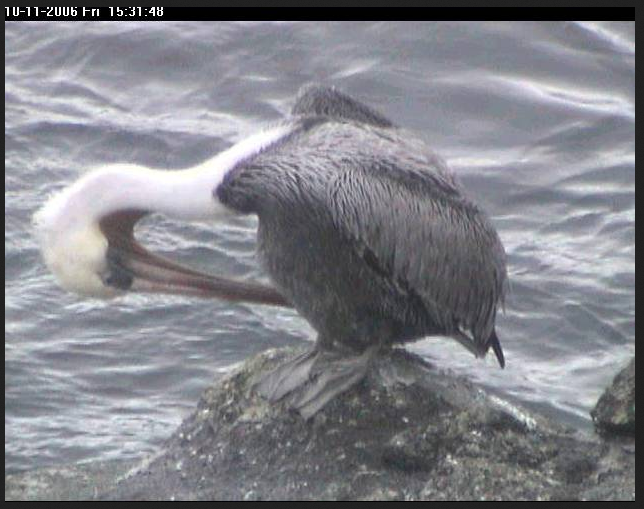
-
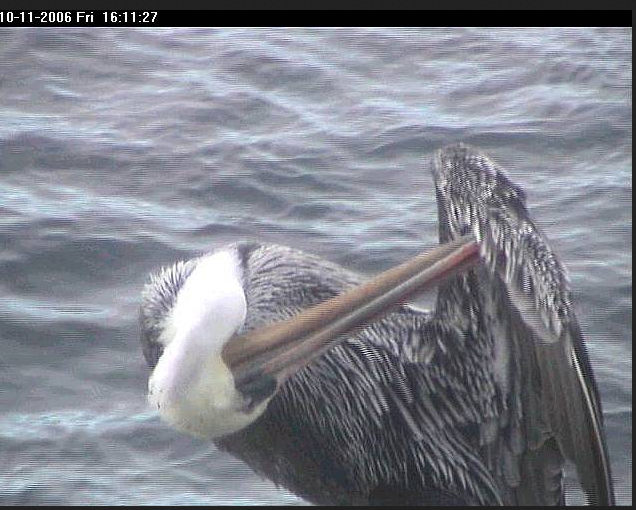
-
Preening feathers can be complicated with a bill that long
-
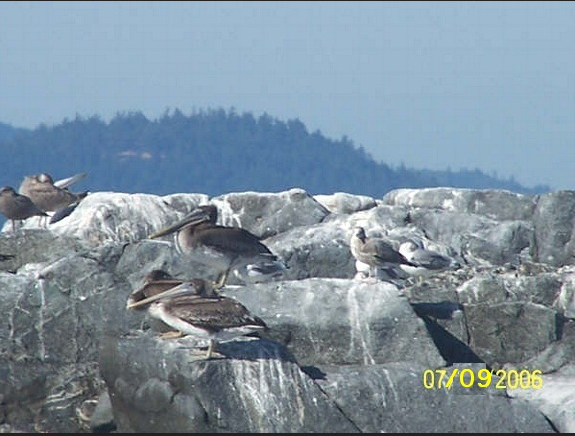
-
Another sighting of Pelicans at Race Rocks.
-
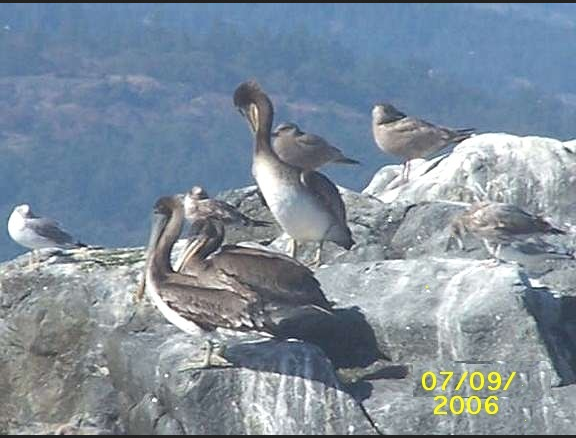
-
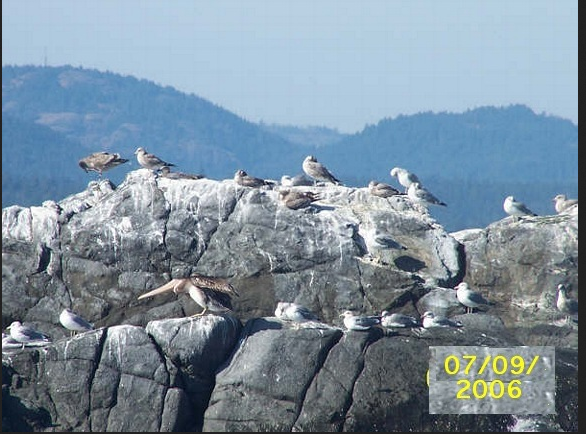
-
Photos by Lucia, PC yr 33 September 7, 2006
-

-
Pam Birley caught this image on Cam 5 from the SE corner on Nov.4, 2006 and we observed several on middle island on September 28 as well.
-
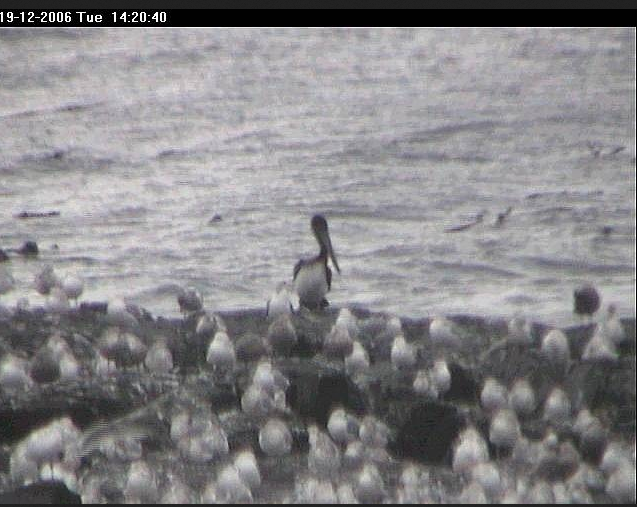
-
Dec 19, 2006. this pelican was sighted again on the south side of RR. Photo by Pam Birley from Remote camera 5 at Race Rocks.
-
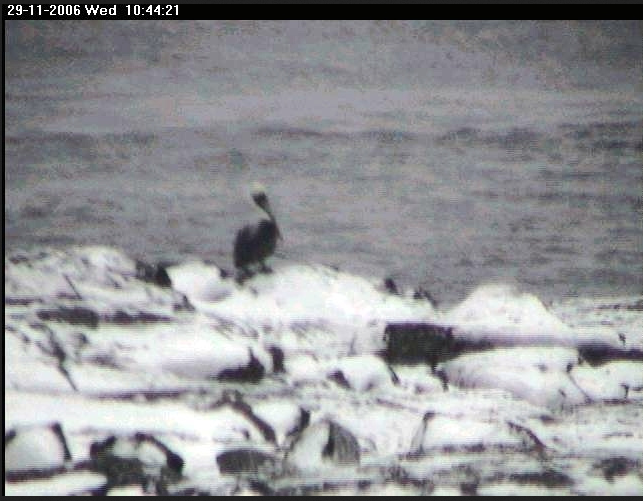
-
On November 29, 2006 we had a large downfall of snow which lasted for several days with cold winds from the north-east.
-
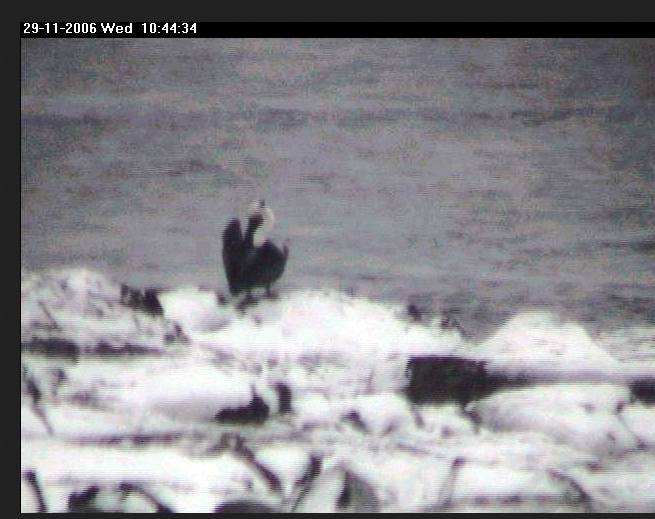
-
This adult pelican was photographed by Pam on the south west corner of the island from remote camera 5.
-
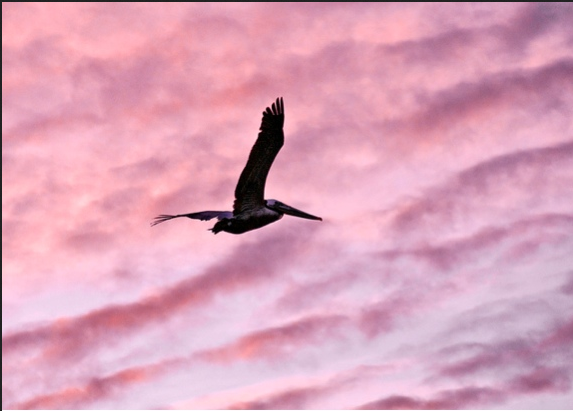
-
“Brown Pelicans are becoming a common sight at Race Rocks.See the log of May 12, 2010: Ryan Murphy
“Other pictures and records of different dates in other years for Pelicans can be seen on Pam Birley’s Flickr site:https://www.flickr.com/search/?w=66339356@N00&q=pelican
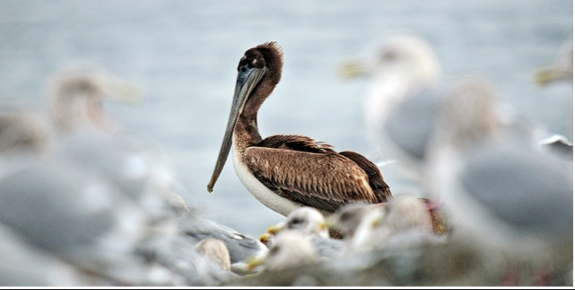
Lonely Pelican in a sea of Larus, Photo by Ryan Murphy– November 24, 2009
CLASSIFICATION:
Domain Eukarya
Kingdom Animalia
Phylum Vertebrata
Class Aves
Order Pelecanifornes
Family Pelecanidae
Genus Pelecanus
Species occidentalis
Common Name Brown Pelican
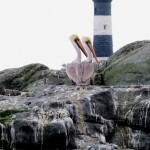 On Nov 19 2014,Rick Page took some great shots of Pelicans at Race Rocks.
On Nov 19 2014,Rick Page took some great shots of Pelicans at Race Rocks.
Other Members of the Class Aves at Race Rocks.
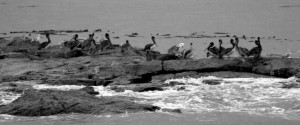 Ecoguardian Alex Fletcher took this shot of a large group of pelicans for his post of
Ecoguardian Alex Fletcher took this shot of a large group of pelicans for his post of
Dec 5 2012. Also Dec15 2012
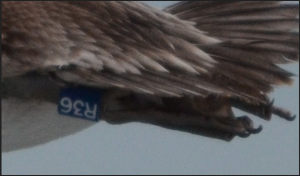 An interesting pelican story resulted from this image taken while a Pelican was in flight which shows the band number R36
An interesting pelican story resulted from this image taken while a Pelican was in flight which shows the band number R36

